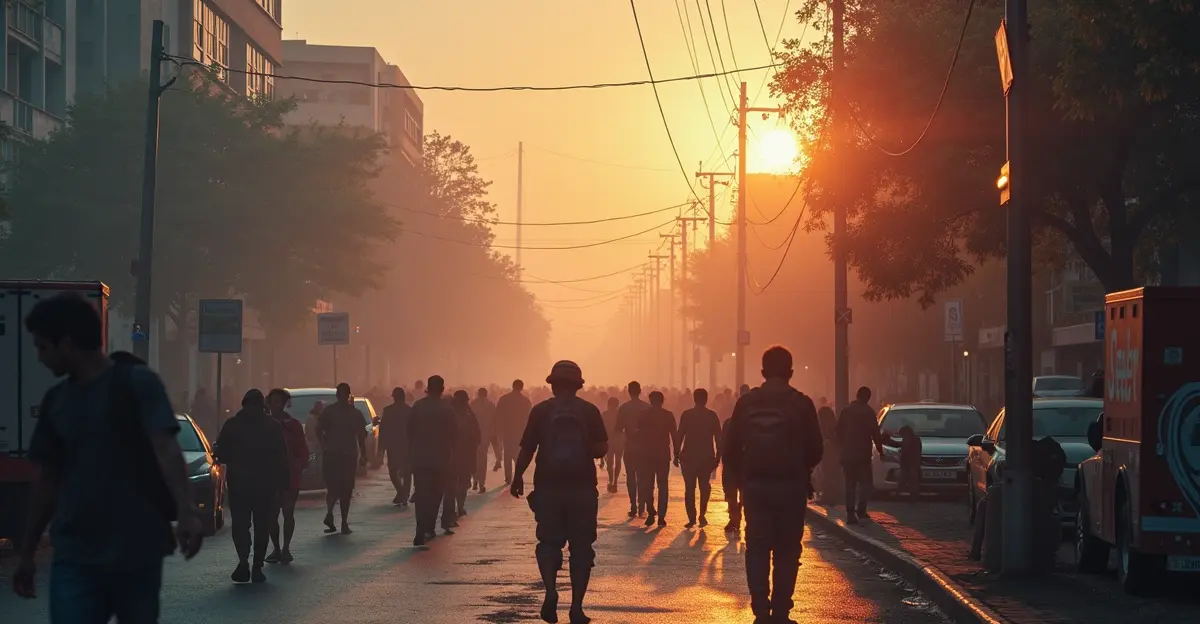Emergency rooms face record heat-related visits as extreme temperatures overwhelm healthcare systems. Cities expand cooling centers and community outreach to protect vulnerable populations during unprecedented heat waves.

Record Heat Strains Hospital Emergency Departments
Emergency rooms across the United States are experiencing unprecedented surges in heat-related visits as extreme temperatures break historical records. According to recent data from the CDC, the 2023 warm season was the hottest ever recorded in the U.S., resulting in 119,605 total heat-related illness emergency department visits. The trend has continued into 2025, with Maryland reporting 1,561 heat-related emergency visits between May and August - the highest since 2020 - and 30 heat-related deaths so far this year.
Dr. Sarah Johnson, an emergency medicine specialist at Johns Hopkins Hospital, told reporters: 'We're seeing patients with severe hyperthermia, heat exhaustion, and exacerbations of chronic conditions like heart disease and respiratory illnesses. The volume is overwhelming our capacity, especially during peak heat hours.'
Hospital Capacity Under Pressure
Healthcare facilities are implementing surge capacity protocols to manage the influx of heat-affected patients. The ASPR TRACIE resources emphasize that surge planning is critical for every healthcare facility's emergency response. Hospitals are converting non-traditional spaces into treatment areas, extending staff shifts, and implementing crisis standards of care during peak demand periods.
New York City's recent heat emergency response demonstrated the scale of the challenge. During a June 2025 heat wave that broke a 137-year-old temperature record, emergency departments reported 341 heat-related visits, including 141 on a single day - the highest single-day total since 2017. 'The coordination between emergency departments, public health agencies, and cooling centers was essential to preventing worse outcomes,' said NYC Emergency Management Commissioner John Miller.
Cooling Centers Take Center Stage
Municipalities are rapidly expanding cooling center networks as a frontline defense against heat-related health emergencies. According to recent data, 81 U.S. cities now operate 1,402 cooling facilities nationwide. These centers provide three critical elements: public accessibility, climate control, and welcoming environments for vulnerable populations.
Phoenix, one of America's hottest cities, has developed a comprehensive 2025 Heat Response Plan that includes designated cooling centers in libraries, community centers, and other public facilities. The plan emphasizes creating non-intimidating environments without mandatory check-ins to encourage use by homeless individuals and those without adequate home cooling.
Maria Gonzalez, director of Phoenix's Office of Heat Response and Mitigation, explained: 'We're prioritizing accessibility over tracking usage. Many vulnerable residents hesitate to use formal cooling centers, so we're working to make them feel like community spaces rather than emergency facilities.'
Community Outreach and Vulnerable Populations
Public health officials are intensifying community outreach efforts, particularly targeting vulnerable groups including older adults, people with pre-existing medical conditions, outdoor workers, and low-income communities. The CDC's Extreme Heat Adaptation initiative supports 16 states and 2 cities through the Climate-Ready States and Cities Initiative, implementing comprehensive strategies including heat health alert systems, home energy assistance, and enhanced surveillance.
A recent systematic review published in Science of The Total Environment confirms that vulnerable populations face disproportionately severe consequences during heat waves. The analysis of 42 studies from 2012-2024 found that heat waves drive higher emergency department admissions for trauma cases and chronic illness exacerbations, with air pollution and urban heat effects compounding the risks.
Community health worker Rebecca Thompson, who works with elderly residents in Baltimore, shared: 'Many seniors don't have air conditioning or can't afford to run it. We're doing door-to-door wellness checks and providing transportation to cooling centers. It's literally saving lives.'
Looking Ahead: Building Heat Resilience
As climate change leads to longer, hotter, and more frequent extreme heat episodes, cities are developing more sophisticated heat response strategies. These include improved early warning systems, better coordination between healthcare providers and emergency services, and long-term infrastructure investments like cool roofs and increased green spaces.
The growing recognition of heat as the leading cause of weather-related deaths in the U.S. is driving increased funding and attention to heat resilience planning. With projections indicating more frequent and intense heat waves in coming years, the current emergency room surges may become the new normal, requiring sustained investment in both emergency response and preventive public health measures.

 Nederlands
Nederlands
 English
English









